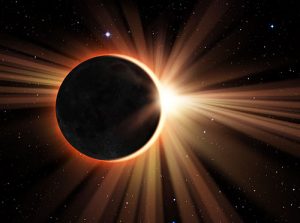 I am looking forward to the total solar eclipse that will travel across the USA next month. My house lies just south of the path of totality so if it is a sunny day I should be in for a treat. While a total solar eclipse is visible from somewhere on earth every 16 months, the August eclipse is rare in that it will pass over a highly populated area as it travels coast-to-coast from Oregon to South Carolina.
I am looking forward to the total solar eclipse that will travel across the USA next month. My house lies just south of the path of totality so if it is a sunny day I should be in for a treat. While a total solar eclipse is visible from somewhere on earth every 16 months, the August eclipse is rare in that it will pass over a highly populated area as it travels coast-to-coast from Oregon to South Carolina.
So how does current technology change how we observe and experience this particular solar eclipse? I expect that it will be the most photographed eclipse ever but I set out to find out what else will be different in our modern connected world.
Eclipse Megamovie
The good folks at Berkeley, Google, The Astronomical Society of the Pacific and others are using crowdsourcing to recruit 1000 photographers to take pictures of the eclipse along the path of totality. They will then combine those pictures into what they call an Eclipse Megamovie. These combined photographs will be valuable not only to casual observers but also to scientists. This is a great application of current digital photography, data storage and photo editing capabilities.
Viewing Choices
Modern transportation will also change how some people observe the eclipse. Alaska Airlines has chartered a plane to follow the totality. It will be open to astronomy enthusiasts except for two seats that will be given away through a social media contest. This will give some lucky observers a chance to see the event from 30,000 feet and should eliminate any chance of clouds obstructing the view.
This is not the first time that an eclipse has been seen from the air. A group of astronomers chartered a supersonic transport in 1974 and flew in totality for 74 minutes in order to observe a similar solar event. They were able to fly across the African continent at twice the speed of sound so that they could stay in the path of near darkness as long as possible. We have available to us great tools for expanding our understanding of the universe.
Thoughts
This upcoming solar eclipse may well be the best observed, recorded and analyzed event. There will no doubt be many terabytes of photos taken and shared on social media. Scientists will likely use modern computing power to reconstruct the event and study it for years to come. This is all part of our modern observed life using technology.
Are there technologies that you think will enhance the upcoming solar eclipse? Let me know your thoughts.
Kelly Brown is an IT professional and assistant professor of practice for the UO Applied Information Management Master’s Degree Program. He writes about IT and business topics that keep him up at night.

